There are many factors affecting the flotation process, including non-adjustable factors and adjustable factors. Among them, non-adjustable factors refer to the ore property, adjustable factors mainly include grinding fineness, pulp concentration, pulp pH value, reagent system, pulp temperature, water quality, flotation time and so on.
But, do you know the influence of these factors on the flotation process?
Use the table of contents below to navigate through the guide:
01Ore Property
Ore property mainly includes chemical composition of ore, mineral composition, ore structure, occurrence state of useful and harmful elements, physical and chemical properties of ore, etc. The fluctuation of ore grade will increase the controlling difficulty of the flotation process.
Among them, the oxidation rate of ore has a great impact on the flotation:
1. The oxidation of metal minerals and gangue minerals will change the original mineral and ore structure, and then form a series of earthen or clay minerals, which greatly increases the amount of slime.
2. Due to the oxidation effect, the mineral composition in the ore will become more complex, and its surface physical and chemical properties will also change, so the original flotation process must be changed.
3. The different oxidation degree of ore will affect the pH value of the pulp, thus affecting the type and dosage of flotation reagents.
02Grinding Fineness
Grinding fineness is an adjustable factor, which is mainly realized by grinding operations. The suitable grinding particle size should be determined according to the mosaic particle size of the useful mineral in the mineral processing test results, so that the useful mineral and gangue can basically be dissociated and the conjuncture between the mineral and gangue minerals can be reduced as much as possible. For the coarse-grained monomer minerals, the grinding fineness must be less than the upper limit of the particle size of the minerals floating. For example, the upper limit of the sulfide ore is 0.25 ~ 0.3mm, and that of gold-contained pyrite is 0.2mm. When the monomer gold is more than 0.5mm, it can hardly float, so the particle size shall be controlled below 0.25mm.
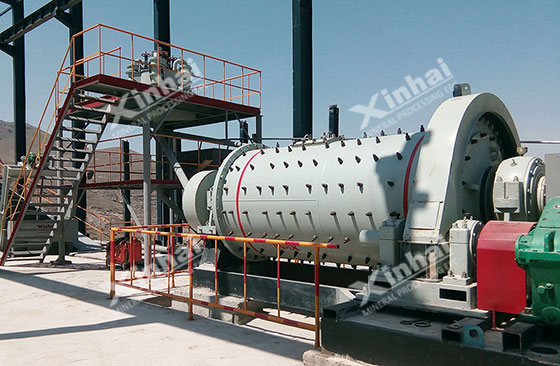
It should be noted that too fine grinding particle size also has a negative effect on the flotation process (that is, over-grinding and sliming). In general, when the grinding fineness is less than 0.01mm, the flotation index decreases significantly. When the grinding fineness is less than 2~5μm, the useful minerals and gangue minerals can hardly be separated. Therefore, selecting the appropriate grinding fineness has a decisive significance to the effect of the flotation process.
03Pulp Concentration
The influence of pulp concentration on the flotation process is mainly reflected in the following aspects:
◆ Recovery rate: There is an obvious regularity between pulp concentration and the recovery rate in the flotation of various minerals. When pulp is very thin, the recovery rate is low. When pulp concentration increases gradually, the recovery rate will increase gradually and reach the maximum value. When the pulp concentration excesses the best value, the recovery rate will decrease.
◆ Concentrate quality: Generally, the concentrate quality is high in the thinner pulp flotation. And the concentrate quality is low in the higher pulp.
◆ Reagent dosage: In the flotation process, the pulp must maintain a certain concentration of agents to obtain good flotation technology indicators. When the pulp is relatively thick, the concentration of reagents in the liquid phase increases, and the dosage of reagents for each ton of ore will be reduced. On the contrary, when the pulp is relatively thin, the dosage of reagents for each ton of ore needs to be increased.
◆ The production capacity of the flotation cell: With the increasing of pulp concentration, the production capacity of flotation machine within the rated capacity (according to the treatment of dry ore) will also increases, at the same time, the consumption of water and power for each ton of ore will be reduced.
◆ Flotation time: Increasing the pulp concentration, the flotation time will be increased, which is conducive to improve the recovery rate.
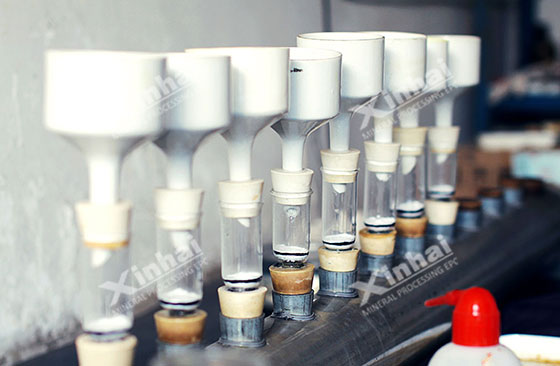
In the practical production, the ore properties and specific flotation conditions must be taken into consideration for the determination of ideal pulp concentration. The general principles are:
◆ For floating the coarse-grained minerals with large proportion, the thicker pulp is adopted; On the contrary, for floating the fine-grained minerals with a small proportion, the thin pulp is used. The common flotation concentration is 25 ~ 45%, and some can reach more than 50%.
◆ The roughing stage often adopts the thick pulp, which can ensure the high recovery rate, save reagents; the concentration stage often adopts the thin concentration, which is conducive to improve the concentrate grade, generally 15 ~ 25%. The concentration of scavenging stage is generally not controlled separately due to the influence of rough stage, which is usually lower than the coarse stage area and higher than the concentration area, mostly 20 ~ 40%.
04Pulp pH Value
When the minerals are floated by different flotation reagents, there is a critical pH value of "float" and "not float". The pulp pH value often directly or indirectly affects the floatability of the minerals. But the critical pH value will change with the flotation conditions. If using the different collectors or changing the concentrations, the critical pH value will change.
Under a certain flotation condition, there is a suitable pH value for any mineral. Only under this value can the concentrator obtain the better flotation index. Therefore, controlling the critical pH value is one of the important methods to control the flotation process index.
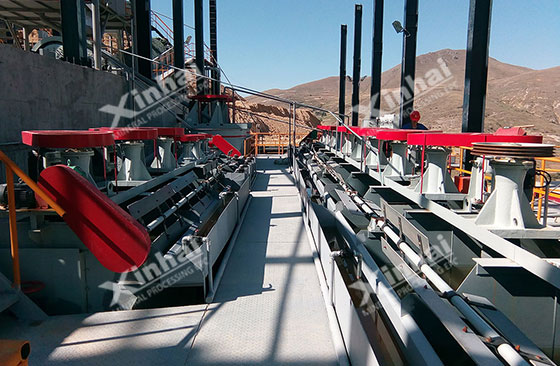
The influence of pulp pH value on the flotation process is mainly reflected in the following aspects:
(1) Electrical properties of mineral surface
For some oxidized and silicate minerals, the pulp pH value will affect the electrical property, and then affect the flotation property.
(2) Mineral floatability
When using the collector, the floatability of most minerals will be affected by the pulp pH value. When the pulp pH value is less than the critical pH value, the mineral may float; When the pulp pH value is greater than the critical pH value, the mineral cannot float.
(3) Existential state of the collector in the solution
Under the different pH values, some collectors will exist in different states.
(4) Hydroxylation of oxidized minerals and silicate mineral surface
The cations of oxidized minerals and the acid-salts surface can be hydrolyzed into hydroxyl complex, and its formation and mass fraction size are strictly controlled by the pH value of mineral slurry, so the final flotation process index will be affected.
05Reagent System
In the flotation process, the addition system of reagents is often referred to as prescription, which mainly refers to the type, quantity, place, order and preparation method of the reagents. It has been proved that many cases are caused by improper flotation reagent system when the flotation index is decreased.
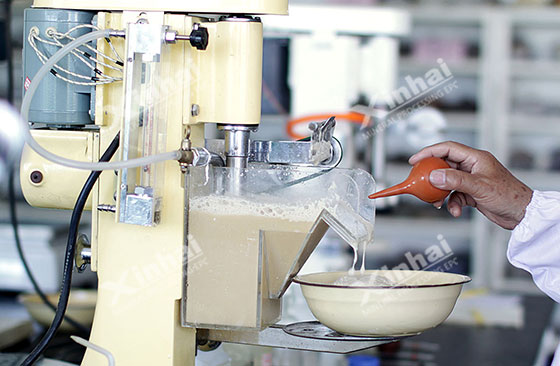
(1) Reagent type
The types of flotation reagents are mainly determined according to the research results of ore separability. Different reagents also have different effects in the flotation process (e.g., collecting, foaming and regulating effect). even if it is the same kind of reagent, two or more kinds of reagents are often used. If collecting agent is used in the production process. For example, the mixed reagents are better than the single reagent when the collector is used. For the gold extraction, the recovery of gold was significantly increased when the xanthate and aerofloat are used together.
(2) Reagent dosage
The flotation reagent dosage is determined by the mineral processing test and practical experience. In the production, the operator needs to adjust the reagent dosage according to the changes in ore properties and other conditions.
◆ The amount of collector is not enough, the hydrophobicity of the floated minerals is not good, so that the recovery rate decreases; If the amount of collector is too much, the recovery rate of useful minerals will not be increased anymore, which causes the waste of reagents, increases the floatability of minerals and leads to the decline of concentrate grade.
◆ The amount of foaming agent is not enough, the foam output is less and the foam layer is not stable, which leads to the decrease of recovery rate. If the amount of foaming agent is too much, the viscosity of pulp will be increased. Too stable flotation foam will has a negative effect on the flotation process, and increase the difficulty of concentrate dewatering.
◆ The amount of inhibitor is not enough, the concentrate grade declines; The amount of inhibitor is too much, the recovery rate of concentrate decreases. Therefore, the dosage of the inhibitor should be controlled to the appropriate range.
(3) Place and order of reagent addition
Place of reagent addition:
◆ The place of reagent addition shall be determined according to the dissolution rate and action time. Low dissolution rate requires a long reacting time. Adding the reagent to the ball mill, or lengthening the distance between the agitation tank and flotation tank, or increasing the agitation time, otherwise adding the reagent to the agitation tank.
◆ Considering the interactions among the various reagents. In general, the additive order is PH regulator - inhibitor or activator, collector - foaming agent.
◆ If there are gravity separation and mercury mixing operations before the flotation, the flotation reagents cannot be added to the ball mill. Because the floating concentrate can affect the gold recovery in the gravity separation and mercury mixing operations. In addition, some reagents can reduce the gold-collecting ability of mercury.
Order of reagent addition:
◆ Concentrated addition: All reagents are added once before the roughing stage. This addition way is suitable for those reagents that soluble in water, not easy to be taken away by foam.
◆ Segmented addition: The flotation reagents are divided into two or more times to add. This addition way is suitable for those reagents that easy to be taken away by foam, and easy to react with fine mud or soluble salt then lose efficacy.
(4) Reagents-making
The flotation reagents are divided into solid and liquid two kinds. Sometimes, the solid reagent will be added directly, sometimes the original solution will be added directly, or the solid reagents are added after prepared a certain concentration of the liquid. The form of reagent addition mainly depends on the solubility of the reagent, action time, reagent dosage and operating conditions.
◆ Water-soluble reagents (such as copper sulfate, xanthate) need to be prepared into 5 ~ 20% solution;
◆ Slightly water-soluble reagents (aerofloat, oleic acid) can be prepared into a low concentration of a solution or directly added to the grinding mill;
◆ Water-insoluble reagents can be dissolved with the organic solvents, and then prepared into a low concentration solution.

06Pulp Temperature
Pulp temperature plays an important role in flotation operation of the flotation machine. Heating can accelerate the thermal motion of molecules and have various influences on minerals, such as accelerating the dispersion, dissolution, hydrolysis and decomposition of reagents, improving the acting speed of reagents and mineral surface, promoting the desorption of reagents, promoting the oxidation of the mineral surface.
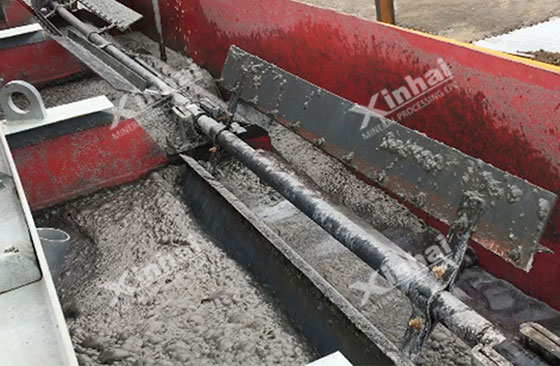
The following two factors are mainly considered when changing the pulp temperature:
Some reagents need to be dissolved at a certain temperature to exert their effects;
Some minerals have special flotation requirements.
07Water Quality
The flotation process is mainly carried out in the water medium, so the water quality has a great influence on the flotation process and its indicators. In general, the flotation water mainly includes soft water, hard water, saltwater, salt-saturated solution and production backwater. Different production processes also have different requirements for water quality. In general, the flotation water should not contain large amounts of suspended matter and the substances that react with flotation reagents or minerals. In addition, the content of dissolved oxygen also has a significant impact on the flotation process index.
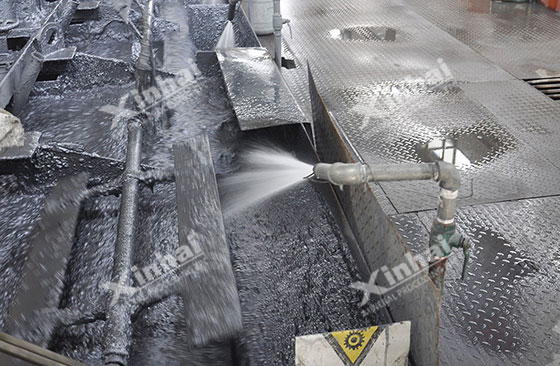
08Flotation Time
The residence time of pulp in each flotation tank is called flotation time, and the sum time of roughing operation and each sweeping operation is the total flotation time of this process.
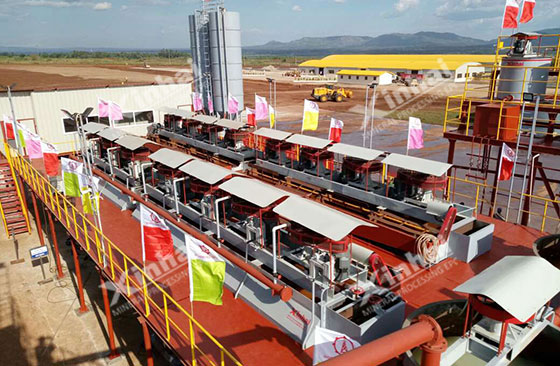
The suitable flotation time is determined by mineral processing test. The required flotation time is shorter if the mineral has a good floatability, the content of floated mineral is low, the feeding size is appropriate, the pulp concentration is small, and the reagent action is strong, the air inflation of flotation machine is strong. Otherwise, a longer flotation time is needed.
Increasing the flotation time can increase the recovery rate, but the concentrate grade will be decreased. In the beginning, the recovery rate is increased obviously, but with the prolongation of flotation time, the increasing rate is decreased gradually until a fixed value.
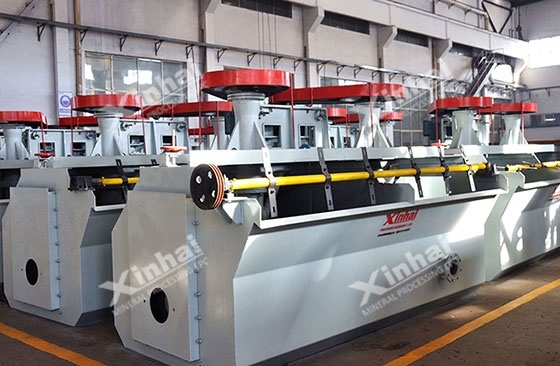 To Wrap Up
To Wrap UpIn short, the flotation process is a common mineral processing technology in concentrator production, its process will directly affect the final technical and economic indicators. In the production, it is suggested that the mine owner must pay attention to every detail of flotation process, and decide the process parameters according to the results of scientific mineral processing test, so as to obtain the ideal benefit.


 marketing@ytxinhai.com
marketing@ytxinhai.com  0086 13810327080
0086 13810327080 






































































































 CHAT
CHAT MESSAGE
MESSAGE











